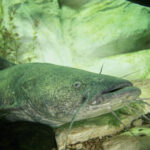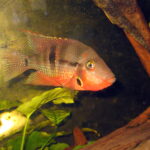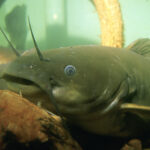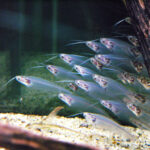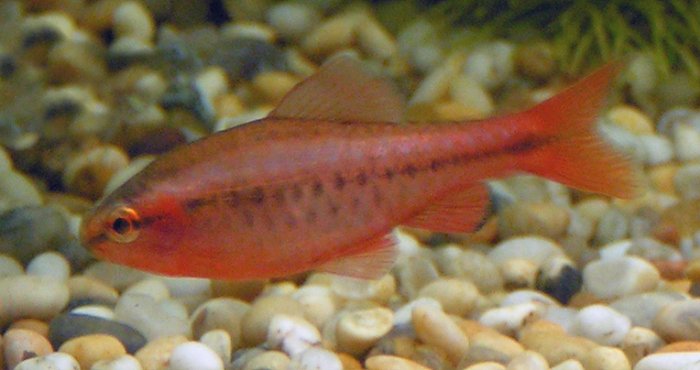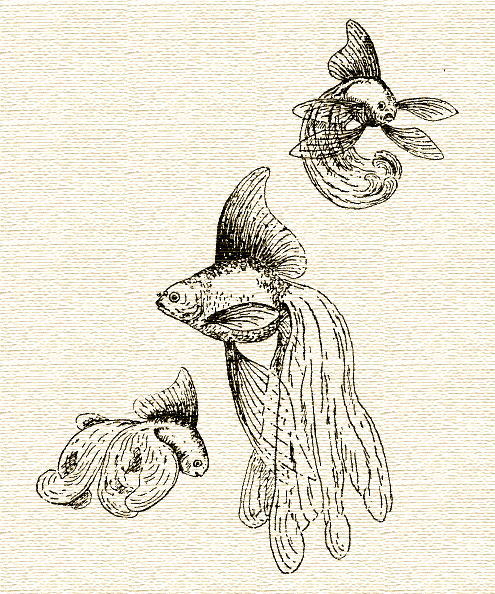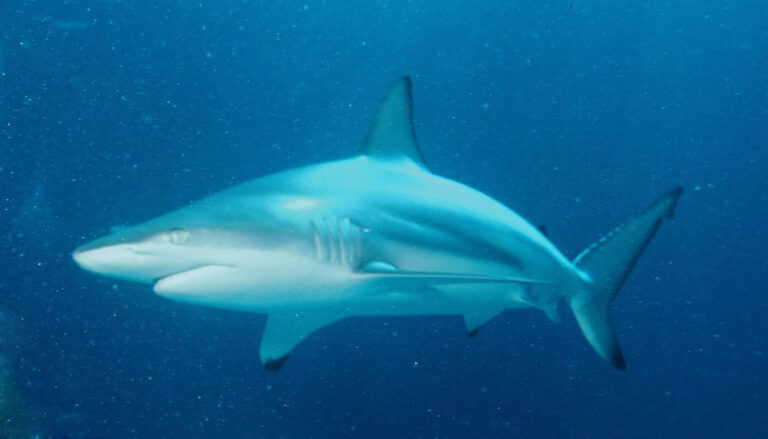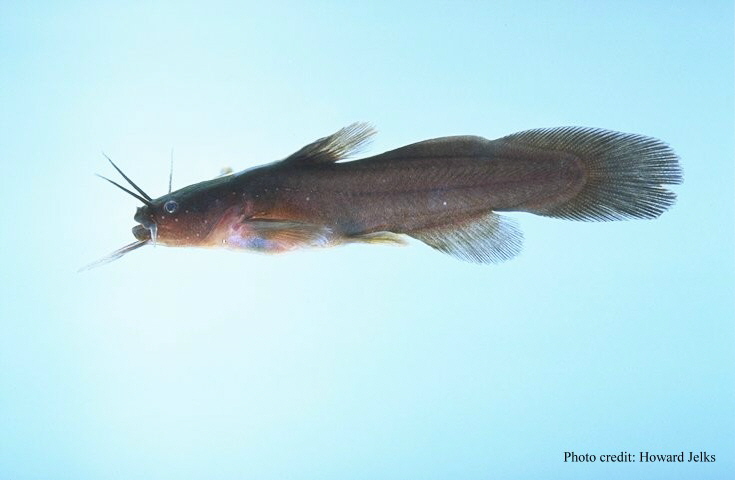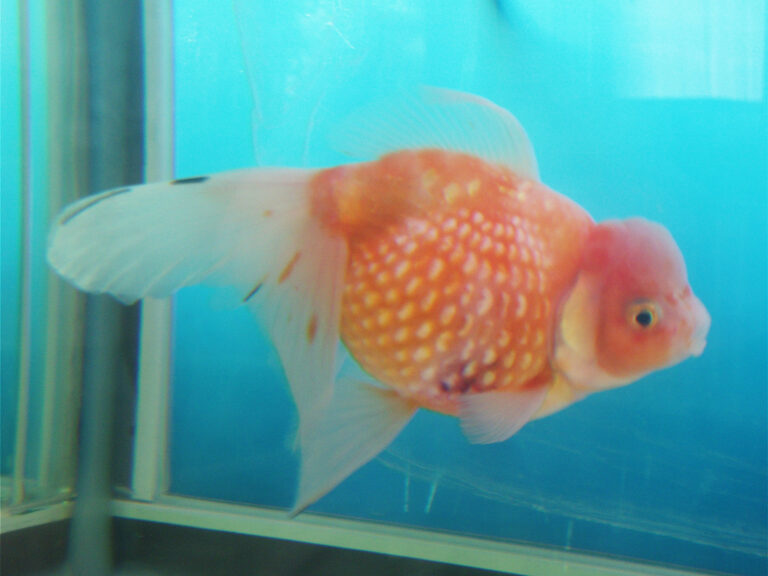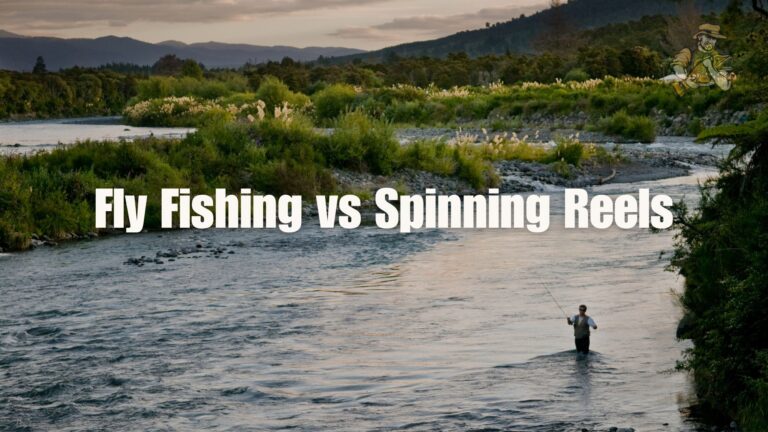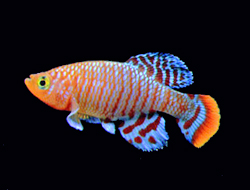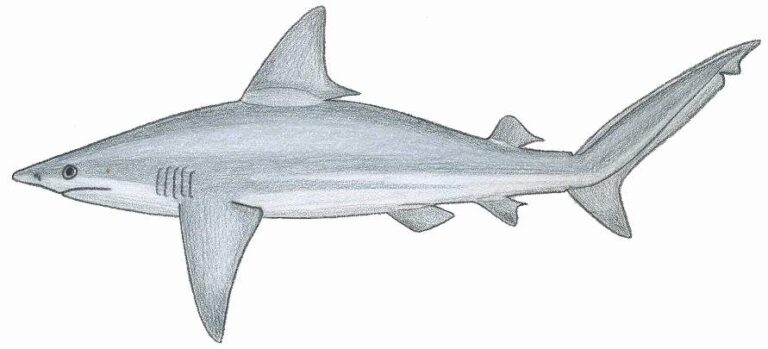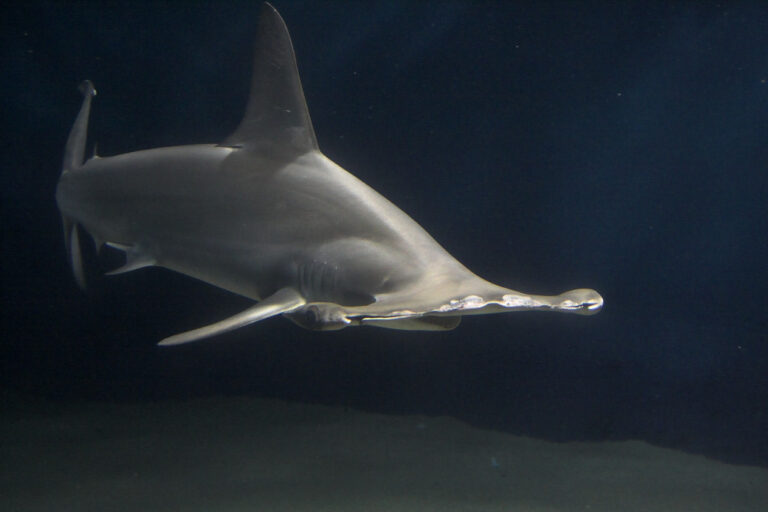Lyretail Molly
By Ryan Maron | Last Modified: June 12, 2025

The Lyretail Molly (*Poecilia latipinna*) stands as one of the most recognizable and ecologically significant freshwater fish species in North American aquatic ecosystems. This vibrant livebearing fish, distinguished by its characteristic sail-like dorsal fin and elongated tail fin that resembles a lyre, plays a crucial role in maintaining ecological balance within its native habitat range. Originally inhabiting the coastal waters and freshwater systems of the southeastern United States, the Lyretail Molly has evolved remarkable adaptations that allow it to thrive in both freshwater and brackish environments.
The species holds particular importance in aquatic food webs as both a consumer of algae and small invertebrates and as a vital food source for larger predatory fish, birds, and aquatic mammals. Its prolific breeding capacity and adaptability to varying salinity levels make it a keystone species in many coastal marsh ecosystems. The Lyretail Molly’s ability to control mosquito populations through consumption of larvae also provides significant ecological benefits to human communities in its native range.
| Feature | Details |
|---|---|
| Common Name | Lyretail Molly |
| Scientific Name | Poecilia latipinna |
| Family | Poeciliidae |
| Typical Size | 8-15 cm (3-6 inches), 15-30 grams |
| Habitat | Freshwater and brackish coastal waters |
| Diet | Omnivorous – algae, invertebrates, detritus |
| Distribution | Southeastern United States, Gulf Coast |
| Conservation Status | Least Concern |
Taxonomy & Classification
The Lyretail Molly belongs to the family Poeciliidae, a diverse group of small freshwater fish commonly known as livebearers. Within this family, *Poecilia latipinna* represents one of the most studied species due to its ecological importance and widespread distribution. The genus *Poecilia* encompasses approximately 40 recognized species, with the Lyretail Molly serving as the type species for several morphological and behavioral studies.
Taxonomically, the species was first described by Charles Alexandre Lesueur in 1821, though its classification has undergone several revisions as molecular techniques have refined our understanding of poeciliid relationships. The species exhibits significant phenotypic plasticity, leading to the recognition of several subspecies and geographic variants. Recent phylogenetic analyses have confirmed *P. latipinna* as a distinct species within the *Poecilia sphenops* species complex.
The family Poeciliidae is characterized by internal fertilization and live birth, distinguishing them from the majority of freshwater fish species that practice external fertilization. This reproductive strategy has contributed significantly to the evolutionary success of the Lyretail Molly and its relatives across diverse aquatic environments.
Physical Description
The Lyretail Molly exhibits remarkable sexual dimorphism, with males displaying more pronounced fin development and coloration than females. Adult males typically reach lengths of 8-10 centimeters, while females can grow substantially larger, reaching 12-15 centimeters. The species’ most distinctive feature is the enlarged dorsal fin, which can extend vertically to heights exceeding the fish’s body depth in mature males.
Male Lyretail Mollies develop an elongated, pointed anal fin called a gonopodium, which serves as the primary reproductive organ. This modified fin structure allows for internal fertilization and represents a key diagnostic feature for species identification. The caudal fin displays the characteristic lyre shape, with extended upper and lower rays creating the distinctive fork that gives the species its common name.
Coloration varies significantly among individuals and populations, ranging from silvery-green base tones to deep olive or bronze hues. Wild specimens typically exhibit darker pigmentation along the dorsal surface, providing effective camouflage against predators. The species displays numerous small, dark spots scattered across the body and fins, creating a speckled appearance that becomes more pronounced during breeding seasons.
The Lyretail Molly’s body plan reflects its adaptation to shallow, vegetated waters. The laterally compressed body allows for efficient maneuvering through dense aquatic vegetation, while the upturned mouth facilitates surface feeding on floating organic matter and emerging insects.
Habitat & Distribution
The native range of the Lyretail Molly extends throughout the coastal plains of the southeastern United States, from North Carolina south to Florida and west along the Gulf Coast to Texas and northeastern Mexico. This distribution encompasses a diverse array of aquatic habitats, including freshwater streams, rivers, ponds, marshes, and brackish coastal waters.
The species demonstrates remarkable euryhaline capabilities, tolerating salinity levels ranging from pure freshwater to nearly full seawater strength. This physiological adaptation allows Lyretail Mollies to inhabit tidal zones, salt marshes, and estuarine environments where salinity fluctuates dramatically with tidal cycles and seasonal variations in freshwater input.
Preferred habitats typically feature shallow depths of 0.5 to 2 meters, abundant aquatic vegetation, and soft substrates rich in organic matter. The species shows strong associations with emergent and submerged vegetation, utilizing plant communities for shelter, foraging opportunities, and spawning sites. Water temperature tolerance ranges from 18°C to 30°C, with optimal breeding occurring between 24°C and 28°C.
Human activities have significantly expanded the species’ range through both intentional and accidental introductions. Established populations now exist in numerous locations outside the native range, including parts of California, Nevada, and several international locations where the species has become naturalized in suitable habitats.
Diet & Feeding Behavior
The Lyretail Molly exhibits omnivorous feeding behavior, with dietary composition varying seasonally and according to habitat conditions. Primary food sources include filamentous algae, diatoms, small invertebrates, detritus, and occasional plant material. The species plays a crucial ecological role in controlling algal growth and processing organic matter within aquatic ecosystems.
Feeding activity occurs primarily during daylight hours, with peak foraging periods coinciding with morning and late afternoon when water temperatures are optimal. The upturned mouth structure facilitates surface feeding, allowing the species to capture floating insects, larvae, and organic particles. Subsurface feeding involves systematic browsing of algal growths on submerged surfaces and selective consumption of small invertebrates.
Juvenile Lyretail Mollies focus primarily on microscopic prey items, including rotifer species, small crustaceans, and algal cells. As individuals mature, dietary breadth expands to include larger invertebrates, plant material, and detritus. This ontogenetic diet shift reduces intraspecific competition between age classes and maximizes resource utilization within habitats.
The species demonstrates adaptive feeding responses to environmental conditions. During periods of low food availability, Lyretail Mollies increase browsing behavior on algal films and detrital accumulations. In nutrient-rich environments, selective feeding on high-quality food items becomes more pronounced, contributing to improved growth rates and reproductive success.
Behavior & Adaptations
Lyretail Mollies exhibit complex social behaviors characterized by loose aggregation patterns and dynamic group structures. School formation provides protection from predators while facilitating information transfer regarding food resources and environmental conditions. Group size typically ranges from 5 to 20 individuals, though larger aggregations may form in areas with abundant resources or during seasonal migrations.
The species demonstrates remarkable behavioral plasticity in response to environmental stressors. When exposed to increased salinity levels, individuals adjust feeding behavior and habitat selection to optimize osmoregulatory efficiency. This behavioral adaptation, combined with physiological tolerance mechanisms, enables successful colonization of brackish water environments.
Territorial behavior becomes pronounced during breeding seasons, with dominant males establishing and defending small territories around optimal spawning sites. These territories typically encompass areas with dense vegetation cover and minimal current flow. Territorial displays include fin spreading, lateral displays, and chase behaviors directed toward subordinate males and potential competitors.
The species exhibits sophisticated predator avoidance behaviors, including rapid schooling responses, vegetation seeking, and burst swimming capabilities. When threatened, groups quickly disperse into dense plant cover before gradually reforming once danger has passed. This behavioral strategy proves particularly effective in shallow, vegetated habitats where cover availability is high.
Reproduction & Life Cycle
The Lyretail Molly employs a live-bearing reproductive strategy that provides significant advantages in variable aquatic environments. Internal fertilization and subsequent development of embryos within the female’s body protect developing offspring from environmental stressors and predation pressure during critical early developmental stages.
Reproductive maturity occurs at approximately 6-8 months of age, corresponding to body lengths of 4-5 centimeters in males and 5-6 centimeters in females. Breeding activity continues throughout the warmer months, with peak reproductive output occurring when water temperatures exceed 24°C. Under optimal conditions, females can produce broods every 28-35 days.
Gestation periods range from 24 to 30 days, depending on water temperature and female condition. Brood sizes typically contain 20-80 fry, with larger females generally producing more offspring. Newborn fry measure approximately 6-8 millimeters in length and are immediately capable of independent feeding and swimming.
The species exhibits interesting reproductive behaviors, including mate selection based on male fin development and coloration. Females demonstrate preferences for males with well-developed dorsal fins and bright coloration patterns, suggesting sexual selection pressures that maintain the species’ distinctive morphological characteristics. This reproductive strategy, combined with molly fish breeding patterns, contributes to the maintenance of genetic diversity within populations.
Predators & Threats
The Lyretail Molly faces predation pressure from a diverse array of aquatic and terrestrial predators throughout its life cycle. Largemouth bass, spotted bass, and other centrarchid species represent primary fish predators in freshwater habitats. In brackish environments, red drum, spotted seatrout, and various snook species commonly prey upon adult and juvenile mollies.
Avian predators play significant roles in molly mortality, particularly in shallow water habitats. Great blue herons, great egrets, and various duck species regularly consume Lyretail Mollies during foraging activities. The species’ tendency to aggregate in shallow areas makes them particularly vulnerable to wading bird predation.
Habitat modification represents the most significant anthropogenic threat to wild Lyretail Molly populations. Coastal development, wetland drainage, and water diversions have eliminated or degraded substantial portions of the species’ native habitat. Agricultural runoff and urban stormwater introduce pollutants and alter water chemistry in remaining habitats.
Climate change poses emerging threats through alterations in precipitation patterns, increased storm intensity, and rising sea levels. These environmental changes affect the delicate balance of freshwater and saltwater mixing that characterizes optimal Lyretail Molly habitats. Temperature increases may also push some populations beyond their thermal tolerance limits during summer months.
Invasive species interactions create additional pressure on native Lyretail Molly populations. Competition for resources and habitat space from introduced fish species has been documented in several locations within the native range. However, the species’ adaptability and reproductive capacity have generally enabled persistence despite these challenges.
Conservation Status
The International Union for Conservation of Nature (IUCN) currently classifies the Lyretail Molly as “Least Concern” due to its stable population trends and widespread distribution. The species’ adaptability to various environmental conditions and high reproductive output contribute to its resilience against most conservation threats.
Despite the overall stable conservation status, regional population declines have been documented in several areas due to habitat loss and degradation. Coastal development pressures in Florida, Texas, and other Gulf Coast states have eliminated significant areas of suitable habitat. State wildlife agencies monitor these populations and implement habitat protection measures where feasible.
The species benefits from protection under various wetland conservation programs, including the North American Waterfowl Management Plan and state-level coastal habitat initiatives. These programs focus on preserving the shallow water, vegetated habitats essential for Lyretail Molly survival and reproduction.
Research efforts continue to monitor population trends and assess the impacts of environmental changes on the species. Long-term studies provide valuable data for understanding how climate change and human activities affect Lyretail Molly populations across their native range.
Human Interaction
The Lyretail Molly holds significant value in the ornamental fish trade, representing one of the most popular aquarium species worldwide. Selective breeding programs have produced numerous color variants and fin types that differ substantially from wild populations. This commercial interest has led to extensive captive breeding operations and reduced pressure on wild populations for aquarium trade purposes.
The species provides important ecosystem services in its native range, particularly through mosquito control. Lyretail Mollies consume substantial quantities of mosquito larvae, contributing to natural pest management in coastal areas. This ecological function has led to intentional introductions in some regions for biological control purposes.
Recreational fishing interactions occur primarily as incidental catch during angling for larger species. While not typically targeted by anglers, Lyretail Mollies occasionally serve as bait fish for larger predatory species. Their hardy nature and availability make them useful for live bait applications in certain fishing contexts.
Educational and research applications utilize the species extensively due to its ease of maintenance and interesting behavioral characteristics. Betta fish varieties and other popular aquarium species share similar research applications in behavioral and physiological studies.
Environmental monitoring programs employ Lyretail Mollies as indicator species for ecosystem health assessment. Their sensitivity to water quality changes and habitat modifications makes them valuable for detecting environmental degradation in coastal and freshwater systems.
Interesting Facts
The Lyretail Molly possesses remarkable osmoregulatory capabilities that allow individuals to transition directly from freshwater to full-strength seawater without acclimatization periods. This physiological adaptation is relatively rare among freshwater fish species and contributes significantly to the species’ ecological success.
Archaeological evidence suggests that Native American communities in the southeastern United States utilized Lyretail Mollies as a food source for thousands of years. Shell midden deposits contain fossilized molly remains, indicating the species’ historical importance to indigenous peoples.
The species exhibits interesting thermoregulatory behavior, congregating in shallow areas during cooler periods to take advantage of solar heating. This behavior allows Lyretail Mollies to maintain optimal body temperatures and activity levels despite ambient water temperature fluctuations.
Lyretail Mollies demonstrate remarkable phenotypic plasticity in response to environmental conditions. Individuals raised in different salinity levels develop distinct body proportions and fin characteristics, suggesting epigenetic responses to environmental stressors.
The species has contributed significantly to scientific understanding of live-bearing reproductive strategies. Research on Lyretail Molly reproduction has provided insights into the evolution of internal fertilization and parental care mechanisms in fish.
Color vision studies have revealed that Lyretail Mollies possess tetrachromatic vision, allowing them to perceive ultraviolet wavelengths invisible to humans. This enhanced visual capability aids in foraging efficiency and predator detection in complex aquatic environments.
Frequently Asked Questions
Can Lyretail Mollies survive in saltwater environments?
Yes, Lyretail Mollies are euryhaline fish capable of surviving in saltwater environments up to full marine salinity levels. Their specialized gill structure and kidney function allow efficient osmoregulation across a wide range of salinity conditions, from freshwater to seawater.
How can you distinguish male and female Lyretail Mollies?
Male Lyretail Mollies are generally smaller and display enlarged dorsal fins, pointed anal fins (gonopodia), and more vibrant coloration. Females are typically larger with rounded anal fins and less pronounced fin development. During breeding seasons, pregnant females develop visibly distended abdomens.
What is the typical lifespan of wild Lyretail Mollies?
Wild Lyretail Mollies typically live 2-3 years under natural conditions, though some individuals may reach 4 years in optimal environments. Lifespan varies significantly based on predation pressure, habitat quality, and environmental stressors such as temperature fluctuations and water quality.
Do Lyretail Mollies play important ecological roles in their native habitats?
Lyretail Mollies serve crucial ecological functions including algae control, mosquito larvae consumption, and providing food sources for larger predators. Their feeding activities help maintain water quality and support healthy aquatic ecosystem dynamics in coastal and freshwater environments.
Conclusion
The Lyretail Molly represents a remarkable example of evolutionary adaptation and ecological resilience in North American freshwater systems. Its unique combination of physiological tolerance, reproductive strategy, and behavioral flexibility has enabled successful colonization of diverse aquatic environments while maintaining stable population levels despite increasing anthropogenic pressures. As climate change and habitat modification continue to challenge aquatic ecosystems, the Lyretail Molly’s adaptability positions it as both a survivor and an important indicator species for monitoring environmental health in coastal and freshwater habitats.
Share The Article:
More Fish Species:
-
Cherry Barb
The Cherry Barb (*Puntius titteya*) stands as one of the most recognizable and ecologically significant small cyprinid species in…
-
Veiltail Goldfish
The Veiltail Goldfish stands as one of the most distinctive and graceful varieties within the goldfish family, renowned for…
-
Blacktip Shark
The Blacktip Shark (Carcharhinus limbatus) stands as one of the most recognizable and ecologically significant predators in tropical and…
-
Tadpole Madtom
The Tadpole Madtom (Noturus gyrinus) represents one of North America’s smallest and most elusive catfish species, playing a crucial…
-
Pearlscale Goldfish
The Pearlscale Goldfish represents one of the most distinctive and captivating varieties of ornamental carp, distinguished by its characteristic…
-
Bleeding Heart Tetra
The Bleeding Heart Tetra represents one of the most distinctive and peaceful freshwater fish species in the aquarium trade,…
Discover
-
Caribbean Inshore Fishing: Bonefish and Permit Tactics
There’s something almost magical about stalking the shallow flats of the Caribbean. I still remember my first bonefish –…
-
How to Spool a Baitcaster for Beginners: 6 Simple Steps
I remember the first time I tried spooling a baitcaster reel. What should have been a simple 15-minute job…
-
Basking Shark
The Basking Shark stands as one of the ocean’s most magnificent gentle giants, representing the second-largest fish species on…
-
Smallmouth Black Bass Fishing: Complete Guide for 2025
If you’ve ever felt that sudden, powerful tug on your line followed by an acrobatic jump that leaves your…
-
Fly Fishing vs Spinning Reels: Choosing the Right Technique
If there’s one debate that never seems to end in fishing circles, it’s fly fishing versus spinning gear. I’ve…
-
Dusky Shark
The Dusky Shark represents one of the most ecologically significant yet vulnerable large predators inhabiting coastal and pelagic waters…
Discover
-
Florida Keys Tarpon Fishing: Seasonal Guide and Rigging Tips
I still remember my first tarpon hookup in the Florida Keys like it happened yesterday, not 17 years ago….
-
Killifish
Killifish represent one of the most diverse and ecologically significant groups of small freshwater and brackish water fish, comprising…
-
Sandbar Shark
The Sandbar Shark (Carcharhinus plumbeus) stands as one of the most recognizable and ecologically significant members of the requiem…
-
Hammerhead Shark
The Hammerhead Shark represents one of the most distinctive and fascinating apex predators in marine ecosystems worldwide. These remarkable…
-
Best Fishing Reels for Any Budget: Complete Guide 2025
When it comes to finding the best fishing reels, quality doesn’t always mean emptying your wallet. After testing hundreds…
-
Alaska Salmon Fishing: Planning Your Trip to the Last Frontier
I still remember the first time I hooked into a Kenai River king salmon. It was July 15, 2019,…






